

TeachingEnglish. Katherine Bilsborough: Lesson plans – less is more. Password protected padlet. Password protected padlet. Stormboard - Help. Getting Started Create a Storm Click , name your storm and click okay.
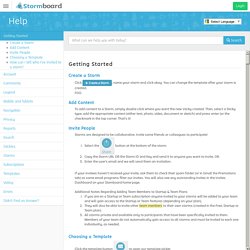
You can change the template after your storm is created. Stormboard - Online Brainstorming and Planning. Add a sticky note and post it online with dot voting. Important to identify and meet individual learner needs. Every teacher must believe and understand that all their learners ought to acquire equal hopes, education and future aspirations from their learning.
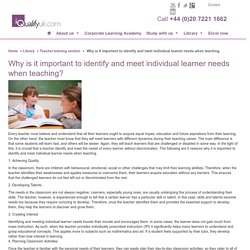
On the other hand, the teacher must know that they will meet learners with different dynamics during their teaching career. The main difference is that some students will learn fast, and others will be slower. Again, they will teach learners that are challenged or disabled in some way. In the light of this, it is crucial that a teacher identify and meet the needs of every learner without discrimination. The following are 5 reasons why it is important to identify and meet individual learner needs when teaching. Grouping students. Do you think about whether you’ve got a balance between pairs, groups, whole class and individual work?
If you have activities for pairs and groups, do you let the students decide who they’re going to work with or do you decide? This tip looks at the advantages and disadvantages of the three main ways of grouping students. They are, giving students the choice, random grouping and selecting the groups yourself. Drama techniques to get them talking. Motivating speaking activities for lower levels. Planning time has been shown to increase production in speaking tasks. Lower level learners often find it especially difficult to speak spontaneously, so these activities incorporate 'thinking time' during which learners can prepare for speaking by planning what they are going to say, and asking the teacher or using a dictionary to look up missing vocabulary. The following activities are relatively short, with minimal materials preparation time for the teacher.
They are designed for use as a warmer or a filler in the middle or at the end of a class. 1. Definitions lists. Getting teenagers talking. Why it's important Long-term and short-term memoryLanguage fitness & agilityAuthenticityWhy they don't use English Peer pressure Lack of motivation Lack of support How we can get students talking Explain why it's important Confidence tricks Attainable goals Conclusion Why it's important Long-term and short-term memory Theoretically, we retain information in two ways: In short-term and long-term storage.
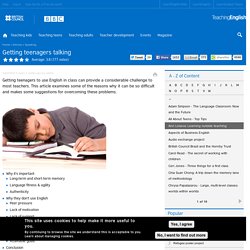
We transfer information from one to the other by convincing our brains that facts in the short-term memory are valuable enough to be put in long-term storage - otherwise, the information is discarded. Our native language is stored in the long-term memory. Language fitness & agility Language learning and maintenance uses a surprising number of muscles - most importantly, the brain, and the more obvious muscles in the mouth and jaw.
It follows logically that just as with any other muscle, the more you exercise it, the easier it is to use. Teaching Large Classes. Handling Student Grades Grading in Large Courses: Common Problems Large courses come with grading problems familiar to instructors across a range of disciplines.
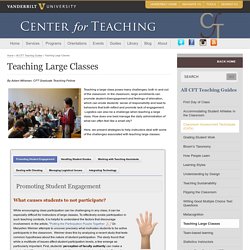
The Sheridan Center for Teaching and Learning. Successful learning experiences in large classes are dependent upon good planning, effective monitoring, inclusive teaching, appropriate assessment, and active engagement by professors and students.
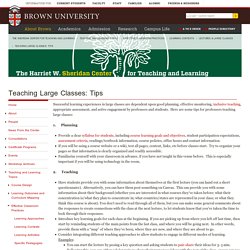
Here are some tips for professors teaching large classes: 1. Planning Provide a clear syllabus for students, including course learning goals and objectives, student participation expectations, assessment criteria, readings/textbook information, course policies, office hours and contact information.If you will be using a course website or a wiki, test all pages, content, links, etc before classes start. Try to organize your pages so that information is clearly organized and readily accessible.Familiarize yourself with your classroom in advance, if you have not taught in this venue before. 2. Teaching large classes. One-to-one: Lesson plans. Teaching one to one.
Studies of Fossilization in Second Language Acquisition. TeachingEnglish. The Basics of Course Planning. As the new academic year comes closer, many of you will be starting to plan your upcoming courses.

Educational courses are usually governed by the basic principles of Curriculum Design and language courses are no exception. These principles included, among other things, the following: Course goalsCourse objectivesCourse materials However, for many in the English Language Teaching world course design isn’t an integral part of planning and preparation, though it probably should be. Most language teachers simply receive a coursebook from the school and are told to teach it over the course of the year.
The teacher who takes the coursebook and divides it up according to each month of the academic year has already taken a significant step in the right direction. 40 Ways to Add Creativity in Your Lesson Plans. Have you had it up to here with bubble tests?

We hear you! To make learning really stick, kids need art, music, drama and hands-on activities. Teacher Talking Time. A consequence of this was the belief that the teacher’s presence in the classroom should be reduced.
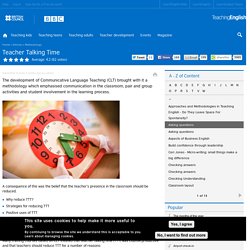
Why reduce TTT? Strategies for reducing TTT Positive uses of TTT Conclusion. 21 Ways to Check for Student Understanding. TeachingEnglish. Checking Understanding. Analysis of the language consists of two sub-stages, often known as highlighting and concept checking.
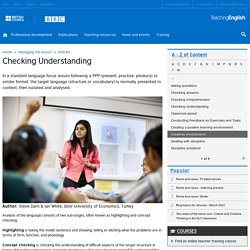
Highlighting is taking the model sentence and showing, telling or eliciting what the problems are in terms of form, function, and phonology. Concept checking is checking the understanding of difficult aspects of the target structure in terms of function and meaning. Concept checking is vital, since learners must fully understand the structure before any intensive practice of form and phonology is carried out. Ways of checking understandingConcept questionsSome examplesLearning to construct concept questionsConclusion Ways of checking understanding Concept checking is normally achieved by the use of a set of questions designed to ensure comprehension of the target language, raise awareness of its problems, and to indicate to the teacher that the learners have fully understood.
The question 'Do you understand? ' Plickers. TeachingEnglish - British Council - Journal. Scholar.google. Zoltán Dörnyei’s Personal Website. Making Learning Awesome! - Kahoot! TeachingEnglish. TeachingEnglish. Course planning. Pre-service teacher training courses typically focus on the detailed planning of a 40 minute or 60 minute lesson and don’t focus attention on how to go about planning a much longer scheme of work.
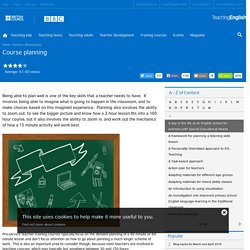
This is also an important area to consider though, because most teachers are involved in teaching courses, which may typically last anywhere between 30 and 120 hours. How to Write a Lesson Plan: 5 Secrets of Writing Fantastic Lesson Plans. TeachingEnglish. TeachingEnglish.